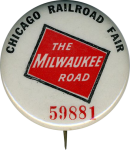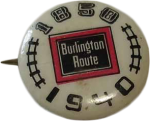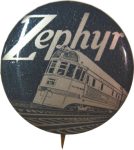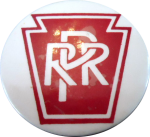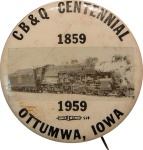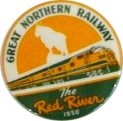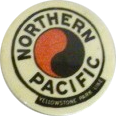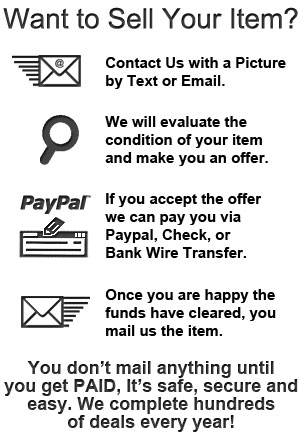Railroad pinback buttons, usually referred to simply as pinbacks, were promotional items given out with the railroad’s logo or slogan on them for people to wear. These buttons are often also called celluloid buttons because early versions of these items were made with the base of the button as metal circle covered by printed paper with whatever design is desired, then a thin layer of celluloid is layed over the paper and the entire button is pressed together. The celluloid coating protects the paper from moisture and tears. Celluloid is one of the first plastics to be manufactured and was first developed in the late 1800s. It became the most common way of producing advertising buttons through the early 1900s for not just railroad, but also politlcal buttons, and other advertising uses. Railroad pinbacks were produced after celluloid fell out of dominance so to be really valuable a pinback will need to be old, in good condition, and a rare design.
Many people collect pinbacks because it is easy to amass a large collection at relatively low cost and the designs are generally eye-catching and engaging. Individual pinback buttons can be bought for less than $5 and it generally takes a collection of pinback buttons to break into the hundreds of dollars. However, there have been examples of extremely rare or desirable buttons selling individually for hundreds of dollars.

